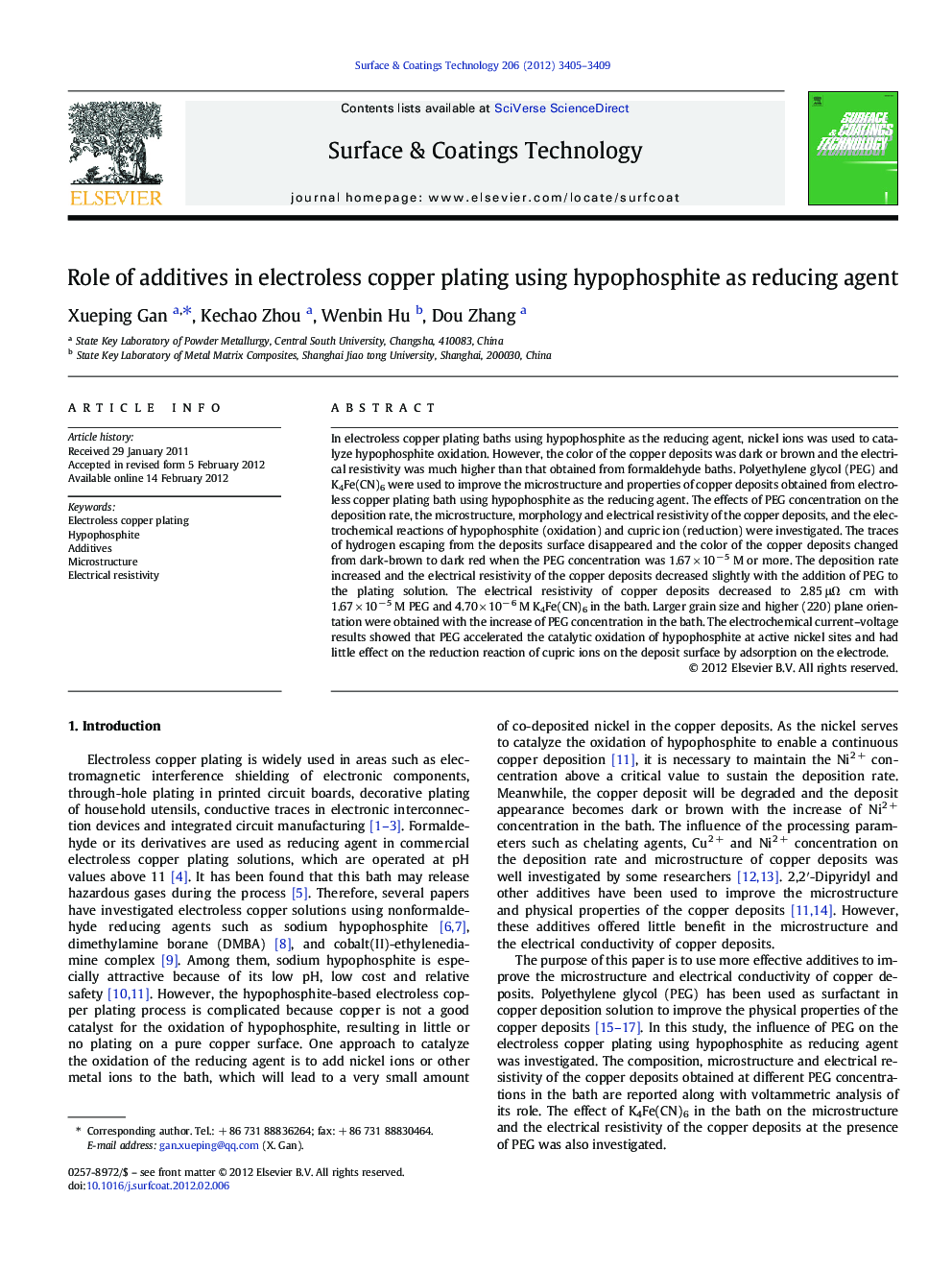| Article ID | Journal | Published Year | Pages | File Type |
|---|---|---|---|---|
| 1658373 | Surface and Coatings Technology | 2012 | 5 Pages |
In electroless copper plating baths using hypophosphite as the reducing agent, nickel ions was used to catalyze hypophosphite oxidation. However, the color of the copper deposits was dark or brown and the electrical resistivity was much higher than that obtained from formaldehyde baths. Polyethylene glycol (PEG) and K4Fe(CN)6 were used to improve the microstructure and properties of copper deposits obtained from electroless copper plating bath using hypophosphite as the reducing agent. The effects of PEG concentration on the deposition rate, the microstructure, morphology and electrical resistivity of the copper deposits, and the electrochemical reactions of hypophosphite (oxidation) and cupric ion (reduction) were investigated. The traces of hydrogen escaping from the deposits surface disappeared and the color of the copper deposits changed from dark-brown to dark red when the PEG concentration was 1.67 × 10− 5 M or more. The deposition rate increased and the electrical resistivity of the copper deposits decreased slightly with the addition of PEG to the plating solution. The electrical resistivity of copper deposits decreased to 2.85 μΩ cm with 1.67 × 10− 5 M PEG and 4.70 × 10− 6 M K4Fe(CN)6 in the bath. Larger grain size and higher (220) plane orientation were obtained with the increase of PEG concentration in the bath. The electrochemical current–voltage results showed that PEG accelerated the catalytic oxidation of hypophosphite at active nickel sites and had little effect on the reduction reaction of cupric ions on the deposit surface by adsorption on the electrode.
► Additives were used to improve microstructure and properties of Cu deposits. ► Color of Cu deposits became from brown to dark-red with PEG addition to bath. ► Electrical resistivity of Cu deposits decreased obviously with PEG and K4Fe(CN)6. ► Larger grain size was obtained with PEG addition to bath. ► PEG can accelerate the catalytic oxidation of hypophosphite.
